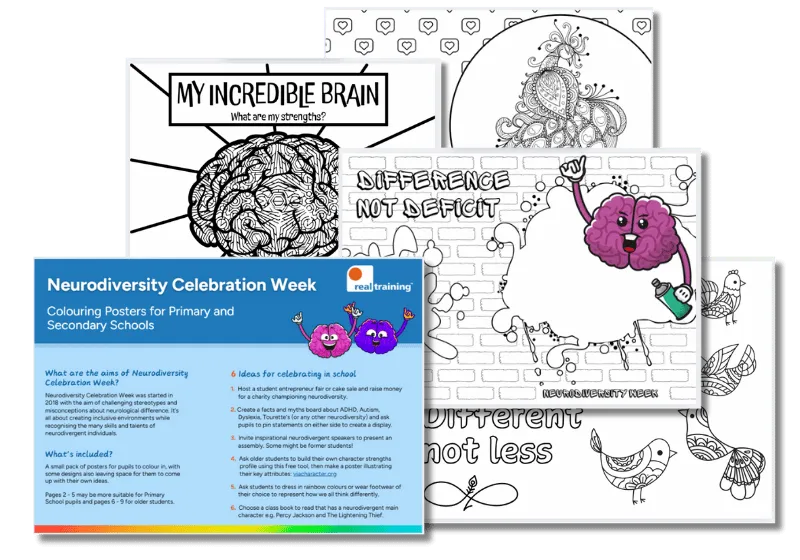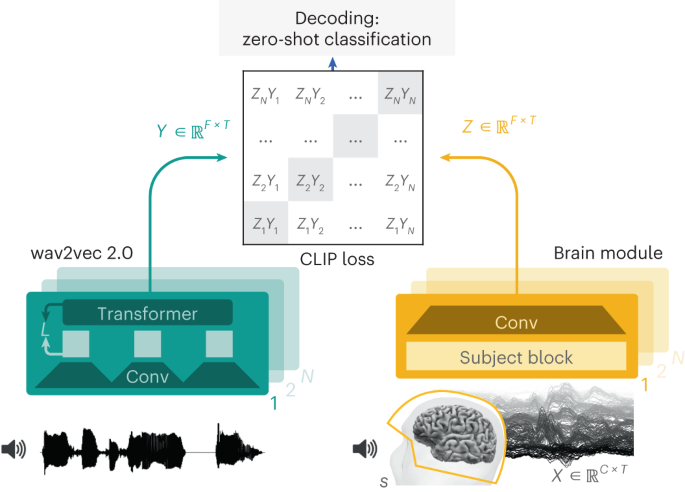Daily Social Schedule for Brain Retraining Academy: Maximize Engagement & Learning
Welcome to our deep dive into crafting a daily social media schedule for brain retraining academies. If you’re managing an academy focused on brain retraining and neuroplasticity, structuring your content delivery is key to keeping your audience engaged, motivated, and learning effectively. A well-planned social media strategy does more than just post updates; it builds a thriving community, fosters learning, and maximizes results. Let’s break down how to structure your posts to provide the best possible experience for your community.
Why Consistency and Structure Matter for Brain Retraining Academies
In today’s fast-paced world, consistency in social media content can make all the difference in how well your audience stays engaged with your program. But it’s not just about posting regularly—it’s about delivering value at the right time with the right kind of content. Establishing a clear structure ensures that your followers know what to expect and when, creating a routine that encourages deeper involvement with the material.
Research has shown that neuroscience-based learning strategies are most effective when there is a consistent structure, making it easier for the brain to process and retain information. Furthermore, providing content at specific intervals can trigger anticipation, making your audience more likely to engage with your posts. This not only maximizes your content’s reach but also creates a sense of connection and commitment within your community.
Key Components of a Successful Social Media Schedule
When creating a social media schedule for your brain retraining academy, it’s important to break down the types of content that will drive the most engagement. Here are the key components you should incorporate into your daily schedule:
- Motivational Content: Inspirational quotes or success stories to kick-start the day.
- Educational Posts: Videos, infographics, or blog posts that explain brain retraining techniques.
- Community Engagement: Live Q&A sessions or community check-ins to encourage participation.
- Interactive Content: Polls, quizzes, and feedback forms to create a two-way conversation.
- Progress Celebrations: Recognizing community milestones or success stories.
Each of these elements contributes to creating a rich learning experience, whether it’s offering knowledge, building motivation, or fostering a sense of community. Content variety is key—by rotating between these different types of posts, you keep your audience engaged without overwhelming them.
Monday: Kickstarting the Week with Motivation
The start of the week is crucial in setting the tone for the days ahead. Begin by posting an inspiring motivational quote or a success story from someone in your community. This can be an example of how brain retraining techniques have improved someone’s life, motivating others to engage with your program.
In the afternoon, share an educational post—this could be a video or infographic explaining a core brain retraining technique. This could also be a post about the science behind neuroplasticity or how a specific technique helps the brain adapt and grow.
In the evening, host a live Q&A session or prompt your community to share their goals for the week. This encourages interaction and helps your followers feel part of something larger than just passive learning.
Tuesday: A Focus on Neuroplasticity & Mindfulness
On Tuesdays, dive deeper into the science behind brain retraining. Begin the day with a quick tip or mindfulness exercise that your followers can try. This could be a simple neuroregulation practice or a reminder about staying mindful throughout the day to reduce stress.
In the afternoon, post an article or research highlight about the power of neuroplasticity and how it can be used to rewire the brain for improved mental health. You could link to an external study, such as one from ACRM, that discusses the impact of neuroplasticity on recovery and brain health.
Finish off the day by featuring a community member—share their story of progress and success. Not only does this inspire others, but it also strengthens the sense of connection within your academy.
Wednesday: Deepening Practices and Busting Myths
Mid-week, it’s time to deepen your community’s understanding of brain retraining. Begin the morning by uploading a short, guided practice video. This could be a meditation session or a somatic exercise designed to enhance brain function and relaxation.
In the afternoon, post an FAQ or myth-busting session. Many of your followers may have misconceptions about the retraining process or may have questions about how neuroplasticity works. Answering these questions directly will help clear up confusion and encourage more people to stick with the program.
In the evening, share a valuable resource. This could be a book, podcast, or article related to brain health that will further educate your audience on how to improve their mental and emotional well-being.

Thursday: Engaging Through Interactive Workshops
Thursdays are for in-depth content. Start the morning with a gratitude or reflection prompt to get your followers to think about their progress or express what they are thankful for in their brain retraining journey.
In the afternoon, dive deeper into a specific brain retraining technique. You could create a carousel or video that explains the nuances of a particular method, such as vagus nerve stimulation or 40Hz light-sound therapy, and how it can be used to improve brain health.
In the evening, host a mini-workshop or an interactive poll. Ask your community for feedback on what content they find most helpful or what they’d like to learn more about. This provides valuable insight into your followers’ preferences and helps you tailor future content to their needs.
Friday: Wrapping Up the Week with Challenges and Celebrations
As the week winds down, it’s time to focus on accomplishments. Start the day by introducing a weekly challenge. Encourage your followers to try a new practice over the weekend, like a specific mindfulness technique or an exercise for improving brain health.
In the afternoon, celebrate progress! Recognize community members who have made strides in their brain retraining journey, no matter how big or small. This boosts morale and keeps the community engaged.
End the week by previewing upcoming content or events for the weekend and the next week. This builds anticipation and ensures your audience stays excited about what’s to come.
Tips for Maximizing the Effectiveness of Your Social Media Schedule
To make sure your social media schedule is working its hardest, consider the following tips:
- Post Consistently: Choose regular posting times and stick to them. This helps your audience know when to expect new content and builds anticipation.
- Mix Content Types: Keep things interesting by posting a variety of content—videos, polls, articles, and more. This avoids cognitive overload and keeps your audience engaged.
- Use Engagement Features: Utilize features like polls, Q&A, and live sessions to engage with your community directly. This fosters two-way communication and a stronger sense of connection.
- Monitor Feedback: Keep track of which posts perform best and tailor your future content accordingly. Pay attention to comments, shares, and engagement rates to refine your approach.
By following these strategies, you’ll be able to create a social media schedule that supports the growth and success of your brain retraining academy, helping your audience engage deeply and learn effectively.
Weekend: Self-Care & Reflection for the Community
The weekend offers a perfect opportunity for reflection and self-care, both for your community and for your content strategy. Begin the weekend by reminding your followers about the importance of rest and self-care. These are often overlooked but crucial aspects of brain health and neuroplasticity.
Share a simple self-care practice that helps to reset the nervous system, such as a guided meditation or a mindfulness exercise. This provides a gentle reminder that brain retraining isn’t just about mental exercises—it’s about giving the mind and body the right tools to recover and heal.
In the afternoon, create an open discussion space where community members can share their experiences, challenges, or progress with others. This space can also be used for people to ask questions or provide advice. A sense of camaraderie often develops when people feel heard and supported by others who are going through the same journey.
End the weekend with a recap and reflection post. Summarize the week’s highlights and invite followers to share their thoughts or feedback. This encourages active participation and keeps your community engaged, as they feel their opinions are valued. It also gives you a chance to analyze the effectiveness of your content and adjust for the next week.
Benefits of a Structured Social Media Schedule
As we’ve discussed, maintaining a structured social media schedule benefits not only your academy’s operations but also your community’s engagement and learning. Here are some key reasons why a schedule works:
- Boosts Accountability: When followers know what to expect, they’re more likely to participate and stay accountable to their goals.
- Enhances Learning: By delivering content in a consistent and predictable manner, you help learners absorb and retain more information.
- Fosters a Stronger Community: Regular check-ins, engagement, and shared experiences create a sense of belonging and community, which are essential for motivation and growth.
- Encourages Progress: Celebrating small victories and milestones builds momentum and reinforces positive behavior.
- Reduces Overwhelm: Breaking down content into manageable chunks and spreading it throughout the week prevents cognitive overload and burnout.
By implementing these structured strategies, you’ll create a system that not only increases engagement but also supports your community in achieving their brain retraining goals.
Integrating Interactive Content for Greater Engagement
Interactive content is one of the most powerful ways to drive engagement and ensure that your followers stay actively involved. Including polls, quizzes, or surveys can give you valuable insight into your community’s preferences while encouraging them to think critically about the content you’re sharing. This also makes learning more dynamic and personalized, which is crucial for programs like brain retraining.
For example, a quiz about neuroplasticity could help followers assess their understanding of the topic, while also giving you a chance to highlight areas for improvement or further learning.
FAQs
- What is the best time to post for maximum engagement?
Timing depends on your audience, but research shows that posting in the morning and early afternoon tends to generate the most engagement. Experiment with your posting schedule and monitor the results to find what works best for your followers. - How often should I post educational content?
Educational content should be posted regularly, but you don’t need to overwhelm your audience. Aim for at least 2–3 educational posts a week, with a mix of short-form and long-form content to cater to different learning styles. - Can I repost content or use old material?
Absolutely! Repurposing old content allows you to reach new followers who may not have seen your original post. You can also update older posts with new information or a fresh perspective to keep them relevant. - How do I measure the success of my content strategy?
Track engagement metrics such as likes, comments, shares, and participation in live events. Use these insights to adjust your schedule and content types based on what resonates most with your audience.
Conclusion: Building a Thriving Community with Consistent Content
Incorporating a structured social media schedule into your brain retraining academy is one of the most effective ways to foster a sense of community and encourage engagement. By offering a balanced mix of motivational content, educational resources, community check-ins, and interactive workshops, you’ll create an environment where your followers feel supported and motivated to achieve their brain retraining goals.
Remember, the key to success is consistency. By sticking to a schedule and continually analyzing your community’s feedback, you can optimize your content strategy to ensure that it not only educates but also builds long-term engagement. Your audience’s success is your success—so invest the time into creating a meaningful and consistent social media presence that will resonate with your followers.
For more tips and insights on brain retraining and neuro-enhancement technologies, explore our detailed reviews and comparisons at NeuroTechInsider.com.
Stay committed, stay engaged, and watch your community thrive!
